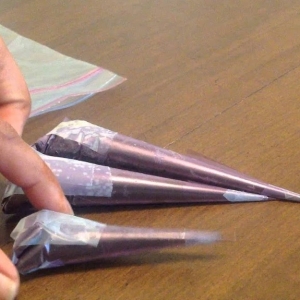A fluorescence microscope is a powerful equipment used to observe and study biological material at the cellular and molecular levels in scientific research, medical diagnostics, and a variety of other fields. Opposed to ordinary microscopes that rely on transmitted or reflected light, it uses the special features of fluorescent molecules to produce colorful, high-contrast images. In this article, we’ll take you through the topic of the topic of how does a fluorescence microscope work, exploring the inner workings of a fluorescence microscope and understanding how it harnesses the phenomenon of fluorescence to reveal intricate details in biological samples.

What is the Basic Working Principle of a Fluorescence Microscope?
A fluorescence microscope’s primary principle is based on the phenomenon of fluorescence, which is the emission of light by certain molecules when activated by a specific wavelength of light. Here’s a summary of fluorescence microscopy’s fundamental principles:
Fluorescent Molecules
Fluorescence microscopy makes use of fluorescent molecules, also known as fluorophores, which are dyes or chemicals that can absorb light of a given wavelength and then emit light of a longer wavelength. These fluorophores can be naturally occurring or synthetic, and they come in a variety of colors, each emitting light at distinct wavelengths.
Excitation and Emission
Fluorescence involves two major steps: excitation and emission. When a sample containing fluorescent molecules is exposed to a specific wavelength of excitation light, the fluorophores absorb this energy and are promoted to a higher energy state. This higher state, however, is unstable, and the fluorophores quickly return to their original, lower energy state, releasing the surplus energy as light.
Specific Wavelengths
Each fluorophore has its own excitation and emission wavelengths, which are critical for fluorescence microscopy. The excitation wavelength is the amount of light needed to excite the fluorophore, while the emission wavelength is the amount of light released as a result of this excitation.
Selective Detection
A fluorescence microscope is outfitted with filters that allow for the selective detection of fluorescent light emitted. Only the emitted fluorescence, which has a longer wavelength, is permitted to pass through to the detector once the excitation light is filtered off. This selective detection ensures that the image captured is unique to the fluorophores in the sample.
High Contrast and Sensitivity
Because of its capacity to detect emitted light selectively, fluorescence microscopy provides excellent contrast and sensitivity. This allows researchers to differentiate fluorescently tagged structures from the background and see small details within the specimen.
Labeling Biological Samples
Biological samples are frequently labeled with fluorescent markers or dyes that target specific cellular structures, proteins, or molecules of interest in fluorescence microscopy. Multiple structures can be tagged and observed simultaneously in the same sample by utilizing separate fluorophores with varied emission colors, allowing for multi-color imaging.
Applications
luorescence microscopy is utilized extensively in a variety of scientific disciplines, including cell biology, immunology, neurology, microbiology, genetics, and medicine. It enables researchers to use high accuracy and real-time imaging to examine cellular processes, protein localization, interactions, and dynamics.
Key components of a fluorescence microscope include the excitation light source, objective lens, emission filter, detector, camera or imaging system, and fluorescent probes. The excitation light source provides the necessary light to excite the fluorophores in the sample, while the objective lens collects and focuses the emitted fluorescence onto the detector. The emission filter then allows only the desired fluorescence signal to pass through to the detector, while blocking out any unwanted light. The detector, such as a PMT or CCD, collects the fluorescence signal, which is then captured and recorded by a camera or imaging system. Finally, fluorescent probes are essential for marking specific cellular structures or molecules in the sample, allowing researchers to visualize and study them in detail. Together, these components enable researchers to observe and study biological samples at the molecular level, providing valuable insights into cell biology and molecular interactions.
Overall, fluorescence microscopy has revolutionized the study of biology and has become an indispensable tool in modern scientific research.







